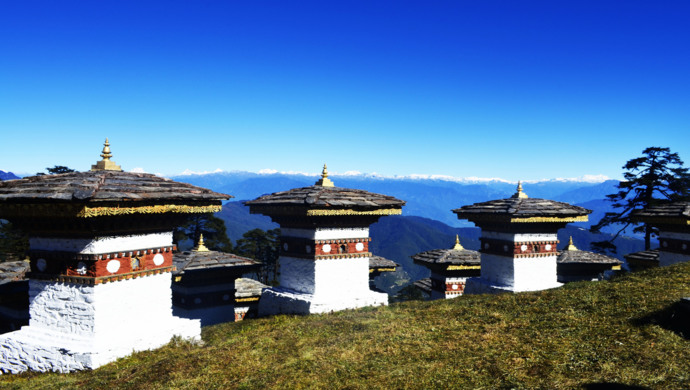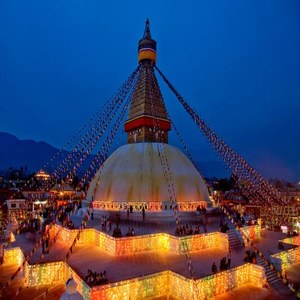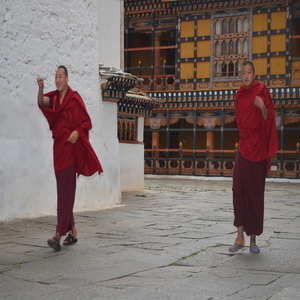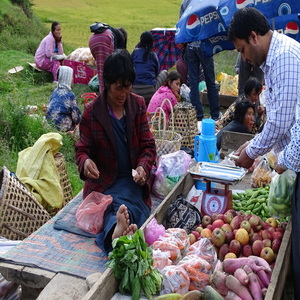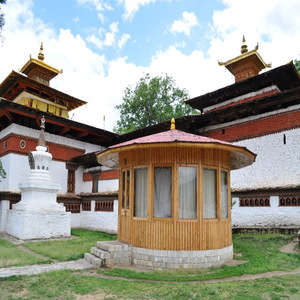Day 1. Arrival in Kathmandu:
After the completion of immigration formalities at the Kathmandu Airport exit door, you will be received by your Nepalese guide. You would be transfer to hotel in Kathmandu. Kathmandu Valley is the political and cultural heart of the Kingdom. The urban sprawl that makes up modern Kathmandu is in fact two cities, Patan and Kathmandu. Rest of the day is at leisure.
Meals – Dinner; Overnight at the Hotel in Kathmandu.
Day 2. Kathmandu Sightseeing:
Altitude: 1,400 mtrs.
After the breakfast, you would be taken on a guided tour of key sightseeing points and visit following places:
- Pashupatinath, place where holy sadhus pray. The Pashupatinath Temple is a famous, sacred Hindu temple dedicated to Pashupatinath and is located on the banks of the Baghmati River 5 Kms North-East of Kathmandu Valley in the eastern city of Kathmandu. This temple is considered one of the most sacred temples for Hindus. The temple serves as the seat of the national deity, Lord Pashupatinath. This temple complex has been on the UNESCO World Heritage Sites's list Since 1979.
- Boudhanath, with its large stupa, this is the place where all devout Buddhists come for a pilgrimage.
- Patan, also known as Lalitpur, the city of beauty is separated from Kathmandu only by the Baghmati River and is the second largest town in the valley. Lalitpur is fragmented from other cities due to its substantive architectural ancient masterpieces. Patan's central Durbar Square is absolutely packed with temples. Its an architectural center point with a far greater concentration of temples per sq. meter than in Kathmandu or Bhaktapur. Within the city also lies the Tibetan refugee center, home to most of the valley's Tibetan population. While technically refugees, the Tibetans are some of the wealthiest people in the valley because of the carpet industry they operate. For those looking to bring home a fine Tibetan carpet, this is the place to shop.
- Swayambhunath, the golden spire of the 5th-century Swayambhu stupa is adorned with a colorful fluttering of prayer flags; it crowns a hill overlooking the Kathmandu Valley and offers fantastic views over the city of Kathmandu. Swayambhunath is one of the most recognizable symbols in Nepal and the painted eyes of Buddha watch all who ascend the worn stone steps.
During the sightseeing you would be taken for lunch in a local restaurant. After the completion of the sightseeing you are driven back to the hotel. Evening free for leisure.
Meals – Breakfast, Lunch & Dinner; Overnight at the Hotel in Kathmandu.
Day 3. Kathmandu – Pokhara:
Driving Distance: 210 Kms, Driving time: 7 hrs., Altitude of Pokhara: 720 mtrs.
In the morning after breakfast, drive to Pokhara. Lunch would be provided enroute. From Pokhara town in good weather there are splendid views right from the hotel. On the way you have an option of doing river rafting or visit the Manakamna Temple “Goddess of Fulfilling Wishes” where you are taken by a cable ride of 9 mins.
Meals – Breakfast, Lunch & Dinner; Overnight at the Hotel in Pokhara.
Day 4. Pokhara Sightseeing:
This morning after breakfast, you will go for a excursion trip to Sarangkot.
- Sarangkot is the most popular tourist destination from where the tourist can enjoy the great view of the Pokhara Valley and the magnificent view of the mountains. It is only 13 kms from Lake Side, Pokhara. It is the highest view point for a sunrise and it is just 1592m high. It is cooler than Pokhara and can be reached easily by 45 to 60 minutes by a car ride to the top from Pokhara. Many tourists come to Sarangkot for sunrise view and go back. Paragliding can also be done from here. From Sarangkot, on the northern direction we can see Dhaulagiri in the far west. Annapurna range is visible when the weather is clear on the same side. On the southern direction the village overlooks the city of Pokhara and its lake on the north-western outskirts of the city.
This afternoon you will visit
- Bindebasini Temple, one of the oldest temples in Pokhara was a part of Kaski Kingdom, the main deity of the temple, Goddess Durga, was brought from India. Apart from the peace and tranquility that can be felt in this region, the premises of the temple offers a good view of the Himalaya on a clear day. The temple is in the area of the bazaar, hence, a journey of the old bazaar can be combined with a visit to the temple. Sightseeing to Devi’s fall, also known as Patale Chango is an awesome waterfall lying 2 km southwest of Pokhara. During summer and rainy season, the waterfall takes its real form, with gushing water splashing and making its way through the rocks.
Just opposite of Devi’s fall, on the other side of the road, there is
- Gupteshwor Cave. This cave is popular for the different natural forms made from limestone deposits. Photography is strictly prohibited inside the cave.
Lunch would be provided in a local restaurant during sightseeing. After the completion of the sightseeing, you are driven back to the hotel. Evening free for leisure.
Meals – Breakfast, Lunch & Dinner; Overnight at the Hotel in Pokhara.
Day 4. Pokhara - Kathmandu:
Driving Distance: 210 Kms, Driving time: 7 hrs.
After breakfast, you are driven back to Kathmandu retracing the same path & transfer to hotel. Rest day at leisure. One can indulge in shopping or visit the casinos trying their lady luck.
Meals – Breakfast, Lunch & Dinner; Overnight at the Hotel in Kathmandu.
Day 6. Kathmandu Airport – Paro – Thimphu:
Bhutan - Driving Distance: 65 Kms, Driving time: 1.50 – 2 hrs., Altitude of Thimphu: 2,350 mtrs.
Today after breakfast, you drive straight to the Airport for your onwards journey to Bhutan. Your flight to Paro on a clear day, is marked with the panoramic views of the Himalayas including the Everest and other famous Peaks. The approach through the foothills and the landing (including few steep turns) at the tiny airstrip of Paro has been termed as adventurous by many travelers. After the completion of immigration formalities at the Paro Airport exit door, you will be received by your Bhutanese guide with traditional “Tashi Khadar”. Afterwards drive to Thimphu following the Pa Chhu (River). Check-In to the hotel and have your first experience with Bhutanese Cuisine. Rest of the day is at leisure. You can explore the Thimphu valley and town or shop till your heart’s content.
Meals – Breakfast, Lunch and Dinner; Overnight at the Hotel in Thimphu.
Day 7. Thimphu Sightseeing:
Today you would be driven in and around Thimphu covering key places of interest. After breakfast you would visit
- Kuensel Phodrang, the gigantic Buddha Dordenma Statue located atop a hill in Kuensel Phodrang Nature Park.
National Memorial Chhorten, a Stupa built in 1974 to honor the third Druk Gyalpo, Jigme Dorji Wangchuck. Every morning till night old people and young people circumambulate the Chhorten. You may choose to light butter lamps and also circumbulate around the Chorten.
Zorig Chusom, Premier institute of traditional arts and crafts in Thimphu established with an objective of preserving “thirteen arts and crafts of Bhutan”.
Folk Heritage, traditional house giving an insight to the Bhutanese lifestyle, and artifacts from the rural households.
Thereafter, you would be taken to a local restaurant for lunch. In the afternoon you would be taken to
- Sangaygang View Point, also known as BBS Tower offering panoramic view of Thimphu Town situated at an elevation of 2,685 m.
- Takin Preserve Centre, see Takin (National animal of Bhutan) It is a unique combination of Goat and an Antelope.
- Tashichhodzong, or ‘the fortress of the glorious religion’. Initially erected in 1641 by Shabdrung Ngawang Namgyal, it was rebuilt in the 1960s during the reign of Bhutan’s third king in the traditional style, without plans or nails. It houses some ministries, His Majesty’s secretariat, and the central monk body and opens after 5 PM.
On the completion of sightseeing, you are driven back to your hotel. After relaxing for sometime you shall be served with dinner.
Meals – Breakfast, Lunch and Dinner; Overnight at the Hotel in Thimphu.
Day 8. Thimphu – Punakha/Wangdue:
Driving Distance: 76 Kms, Driving time: 2.50 – 3 hrs., Altitude of Punakha: 1310 mtrs.
After breakfast you are driven to Punakha/Wangdue, for your second leg of the tour. On the way, after roughly an hour’s drive, you would stop at
- Dochula Pass, lies at an elevation of 3,150 m and is a great place to view the higher Himalayas. The landmarks around the pass includes 108 Druk Wangyal Stupas built under the patronage of Queen Ashi Dorji Wangmo Wangchuk.
You would drive through curvy, mountainous road, patches of which are being repaired. Owing to road widening work, you may find too many stalls along the road side selling snacks and water. It is preferable you buy it at the start of the tour. The drive from Thimphu to Punakha over Dochula leads from cool heights of Thimphu to balmy, lush landscapes of Punakha. After arrival at Punakha, check in to the hotel. Post lunch, you would visit
- Punakha Dzong, built in 1637 by Shabdrung Ngawang Namgyal. For many years until the time of the second King, it served as the seat of the Government. It is still the winter residence of Je-Khenpo (The Chief Abbot of the Central Monastic Body of Bhutan).
- Chhimi Lhakhang, a famous Temple, which is also known as “The Temple of Fertility” built by Lama Drukpa Kuenley.
Later you are driven back to the Hotel. Evening free for leisure activities.
Meals – Breakfast, Lunch and Dinner; Overnight at the Hotel in Punakha/Wangdue.
Day 9. Punakha/Wangdue – Paro:
Driving Distance: 135 Kms, Driving time: 4.50 – 5 hrs., Altitude of Paro: 2,280 mtrs.
After breakfast, you would check out of the hotel to proceed to Paro for the final leg of the tour. On the way stop at
- Royal Botanical Park, Lamperi, also known as the Rhododendron Garden. It is the first Botanical Garden of Bhutan. It is famous for 46 species of rhododendrons.
Till you reach Thimphu, you would drive through the same route which you took which driving to Punakha. Again owing to road widening work, you may find too many stalls along the road side selling snacks and water. It is preferable you buy it at the start of the tour. After arriving at Paro, you would be transferred to you Hotel for Check In. Post lunch, you would be taken around to visit
- Paro Rimpung Dzong, also known as Fortress of the heap of jewels, built during the time of Shabdrung Ngawang Namgyal in 1646
- Ta Dzong, an ancient watch tower overlooking Rimpung Dzong built in 1951 now converted into national museum.
Later you are driven back to the Hotel. Evening is free for leisure activities and shopping around the Paro Town.
Meals – Breakfast, Lunch and Dinner; Overnight at the Hotel in Paro.
Day 10. Paro Sightseeing & Hike to Taktsang:
After breakfast, start your day with a hike to
- Taktsang Monastery (Tiger's nest), the abode of gods and monks situated at an altitude of 3100m on the Upper Paro Valley, Bhutan. As per the legend, Guru Padmasambhana (Guru Rinpoche), the tantrum mystic who brought Buddhism to Bhutan, came in the form of Dorje Droloe riding a flying tigress to subdue the demon that was obstructing the spread of Buddhism in the Himalayas.
After the completion of the hike, you would be served picnic lunch among the woods. Post lunch, visit
- Kyichu Lhakhang, one of the oldest monasteries in Bhutan built in the 7th century by the Tibetan Emperor Songtsen Gampo.
Later in the day, you would then drive to village house to witness the traditional rural life in a Bhutanese village. Also you have an option of experiencing a Traditional Hot Stone bath in the village house. You can also choose to have your dinner in the house with the Family or also spend your overnight in the village house (needed to be confirmed at the time of confirmation of the Tour) or be driven back to your hotel.
Meals – Breakfast, Lunch and Dinner; Overnight at the Hotel in Paro.
Day 11. Departure:
Today we will bid farewell to this beautiful country and take an early flight back. We hope by now you must have made some good friends and also have taken photographs and beautiful memories of Bhutan. We certainly hope of serving you again on your next visit to this great country or the Last Shangri-La. Tashi Delek.
